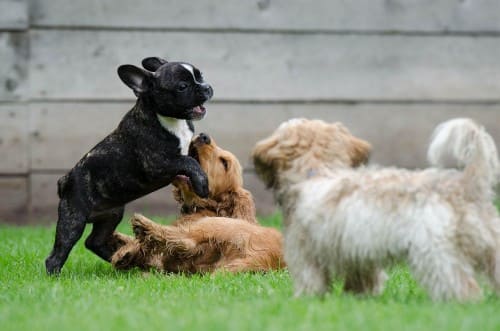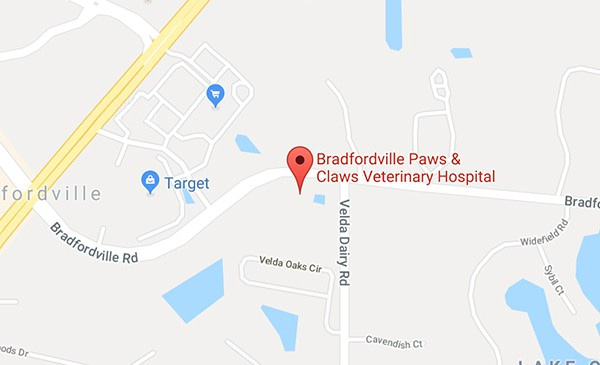Bringing home a new puppy is exciting, but it’s also a big responsibility.
Those first few weeks and months aren’t just about teaching “sit” or “stay.” They’re a once-in-a-lifetime opportunity to shape how your puppy sees the world. The way you introduce them to new people, animals, sounds, and environments during their early development can influence their confidence, behavior, and happiness for years to come.
But here’s the challenge: young puppies are still building immunity, so we can’t just take them everywhere. That’s where safe socialization comes in – finding the right balance between exposure and protection.
Keep reading to learn about your puppy’s critical socialization periods, why timing matters, and proven best practices to help your dog grow into a friendly, well-adjusted companion, all while keeping them healthy and secure.
What Is Puppy Socialization?
Puppy socialization is the process of gently and positively exposing your young dog to a variety of experiences, environments, people, and animals. The goal is simple: help your puppy learn that the world is a safe, interesting place, not something to fear.
Think of it as your puppy’s first education. Instead of math and reading, they’re learning how to greet a friendly stranger, stay calm when a vacuum turns on, or navigate a bustling sidewalk without stress. Done right, socialization builds confidence, prevents fear-based behaviors, and lays the foundation for a well-mannered adult dog.

It’s also important to note that socialization is not the same as obedience training. While “sit” and “stay” teach your dog how to respond to specific cues, socialization is about teaching them how to feel in different situations. Both are essential, but socialization, especially during early development, has a time-sensitive window you can’t afford to miss.
Understanding Puppy Critical Socialization Periods
Puppies don’t learn about the world at the same pace throughout their entire lives. There are key developmental stages, often called critical socialization periods, when they are especially open to new experiences. Missing these windows can make it harder (though not impossible) for your dog to feel comfortable with new situations later.
1. Primary Socialization Period (3–12 Weeks)
This is the most influential stage in your puppy’s life. During this time, they are naturally curious and eager to explore, making it the ideal period to introduce safe, positive experiences.
- What to focus on: gentle handling, meeting friendly people, exposure to common household sounds, and safe interactions with fully vaccinated dogs.
- Why it matters: Puppies who miss socialization during this stage may grow into anxious or fearful adults.
2. Secondary Socialization Period (12–16 Weeks)
Your puppy is still highly adaptable, but they’re becoming more cautious. This is the time to reinforce what they’ve learned and introduce slightly more challenging situations.
- What to focus on: short car rides, trips to pet-friendly stores, walks in busier environments, and meeting people of different ages and appearances.
- Why it matters: Without continued positive exposure, a puppy’s natural caution can develop into lasting fear.
3. Juvenile Period (4–6 Months)
By now, your puppy is gaining independence, but they may also experience temporary “fear periods” where they seem startled by things they were fine with before.
- What to focus on: maintaining gentle, positive exposures without forcing interactions. Keep experiences upbeat and safe.
- Why it matters: This stage is about consistency. If socialization stops here, earlier progress can fade.
How to Socialize Your Puppy Safely
The goal of socialization is to create positive associations with new experiences, not to overwhelm your puppy or put them at risk. Here’s how to strike a balance between building confidence and protecting their health.
1. Work with Your Vet on Vaccination Timing
Young puppies are vulnerable to illnesses like parvovirus, so you’ll need to balance exposure with safety.
- Ask your vet about safe socialization activities you can start before your puppy is fully vaccinated.
- Many vets recommend controlled, low-risk outings paired with continued vaccination protection.
2. Arrange Controlled Dog-to-Dog Introductions
Not all dog meetings are safe, and bad experiences can do long-term damage.
- Set up playdates with healthy, fully vaccinated dogs you know and trust.
- Keep the first interactions short and positive, and watch both dogs’ body language for signs of stress.
3. Use Safe Public Exposure Before Full Vaccination
You can still introduce your puppy to the sights, sounds, and smells of the world without letting them touch the ground in high-risk areas.
- Carry your puppy in your arms, a sling, or a dog stroller during short outings.
- Visit pet-friendly hardware stores, coffee shops, or outdoor markets for sensory experiences.
4. Introduce a Variety of People
Early exposure to different appearances, voices, and movements helps prevent fear later on.
- Invite friends over wearing hats, glasses, or carrying umbrellas.
- Encourage calm greetings with treats and gentle petting.
5. Gradually Expose Your Puppy to New Sounds and Environments
Household appliances, traffic noises, and grooming tools can be scary if introduced suddenly.
- Play sound recordings (thunder, fireworks, city noise) at low volumes and reward calm behavior.
- Let your puppy explore different surfaces like grass, tile, sand, and carpet.
Common Socialization Mistakes to Avoid
Even with the best intentions, some well-meaning owners make mistakes during socialization that can have the opposite effect, leading to anxiety, fear, or behavioral issues later. Here are the most common pitfalls and how to steer clear of them.
1. Overwhelming Your Puppy
Throwing your puppy into a busy dog park or a noisy festival might seem like a “get them used to it” shortcut, but it can backfire.
Better approach: Start with quieter, controlled environments and slowly increase the level of stimulation.
2. Forcing Interactions
Not every puppy wants to meet every dog or person—and that’s okay. Forcing contact can make them fearful.
Better approach: Let your puppy choose to approach, and reward them for curiosity and calm behavior.
3. Skipping Ongoing Reinforcement
Socialization isn’t a one-and-done process. Puppies can forget or lose confidence if they aren’t continually exposed to new experiences.
Better approach: Make exposure part of their weekly routine, even after the critical periods.
4. Waiting Until After the Critical Window
Some owners mistakenly believe they should wait until their puppy is fully vaccinated before starting socialization, missing the most receptive learning stage.
Better approach: Use safe, vet-approved activities early on, carried outings, playdates with vaccinated dogs, and in-home visitor exposure.
Long-Term Socialization Practices
Socialization doesn’t end when your puppy turns six months old. Dogs, like people, can develop new fears or anxieties if they go too long without positive exposure to the world. Maintaining socialization throughout your dog’s life helps keep them confident, adaptable, and happy.
1. Keep Exploring New Places
Regularly visit different neighborhoods, parks, and pet-friendly stores. Even familiar environments can feel new when visited at different times of day or in different seasons.
2. Continue Meeting New People and Dogs
Routine exposure helps your dog stay friendly and open to new encounters. Join group training classes or dog-friendly community events!
3. Maintain Positive Associations
Always pair new experiences with rewards, treats, praise, or play, to reinforce that the world is a safe and enjoyable place.
4. Watch for Fear Periods
Even adult dogs can experience “fear phases” where they react nervously to familiar things. If this happens, take a step back, slow the exposure, and rebuild confidence gradually.
Socializing your puppy isn’t just about making them “friendly”, it’s about giving them the skills and confidence to navigate the world calmly and happily. By understanding the critical socialization periods, starting early, and introducing new experiences in a safe, positive way, you’re setting the stage for a lifetime of good behavior and strong bonds.
Remember: socialization doesn’t stop after 16 weeks. Keep exposing your dog to new sights, sounds, and situations throughout their life to maintain their confidence and adaptability.
If you have any questions, don’t hesitate to contact our hospital for additional information on proper socialization!

